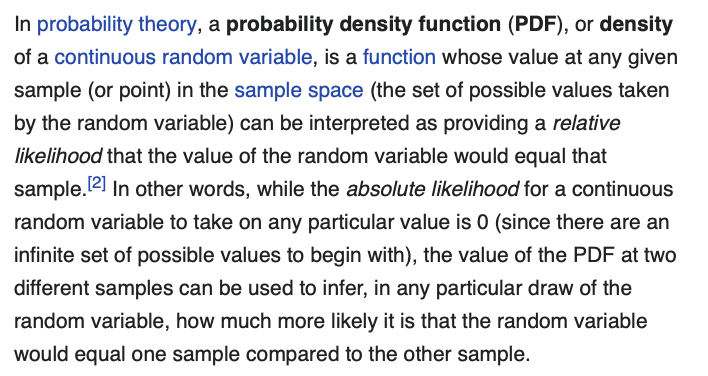How to get URL link on X (Twitter) App
https://twitter.com/davidad/status/1867690235750166684
https://twitter.com/davidad/status/1861435676274958701x.com/repligate/stat… x.com/repligate/stat…

 be careful with that lead-apatite out there folks
be careful with that lead-apatite out there folks
https://twitter.com/ylecun/status/1655609954445717506But I have substantial hope about making this work:


 @RatOrthodox (the exact prompt was:)
@RatOrthodox (the exact prompt was:) 
https://twitter.com/AutismCapital/status/1592406121368543233related: SBF was indeed wrong about the St Petersburg paradox
https://twitter.com/TaylorPearsonMe/status/1590826638429650944?s=20&t=i6NYFAMvKddcyXbd6wiHzg


 Corollary: praise is useful, but specific or realistically-phrased praise is better than generic praise
Corollary: praise is useful, but specific or realistically-phrased praise is better than generic praise 

https://twitter.com/KerryLVaughan/status/1545060355432337409for the record, I don't endorse Kerry's thread; the vitriol level is too high for my taste
https://twitter.com/juan_cambeiro/status/1545121334849683456

 1—Let's start with a positive. This is an important problem to work on! It falls squarely in section 8.2 of ARCHES (nature.com/articles/s4156…), Multi/single Instruction. Like all the multi-agent problems in ARCHES, it has received comparatively little attention within AI safety.
1—Let's start with a positive. This is an important problem to work on! It falls squarely in section 8.2 of ARCHES (nature.com/articles/s4156…), Multi/single Instruction. Like all the multi-agent problems in ARCHES, it has received comparatively little attention within AI safety.
https://twitter.com/jjcarett2/status/1543948734362537991(to be clear checking category-theoretic ideas with the Zulip is actually a very reasonable and good move. it's hilarious how much expertise in this area has become orthogonal to academic hierarchies and that's not a bad thing!)

https://twitter.com/robbensinger/status/1543532796815126530

 @CineraVerinia expressed strong suspicion of this slingshotting, and I think rightly so. In practice, even in the absence of deliberate contrarianism for its own sake, there will be a kind of winner's curse among expert opinions. I labeled this as case 4.
@CineraVerinia expressed strong suspicion of this slingshotting, and I think rightly so. In practice, even in the absence of deliberate contrarianism for its own sake, there will be a kind of winner's curse among expert opinions. I labeled this as case 4. https://twitter.com/CineraVerinia/status/1543536202468450304
https://twitter.com/kareem_carr/status/1293942267410108417ℝ is constructed step-by-step:
https://twitter.com/sir_deenicus/status/1292173738541285378…because there are no other operations that return this arbitrary type R. Meanwhile Dist(X) is more like ∀(R:Convex).(X→R)→R. Now I can give the continuation a bunch of values in X and weighted-average the return values. So a Dist(X) is a bunch of X’s associated with weights.

